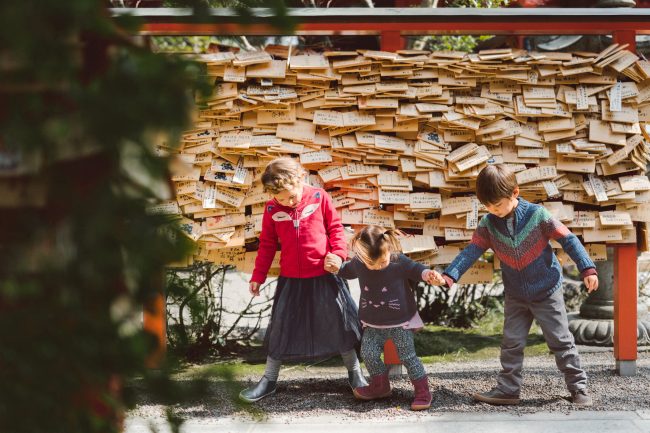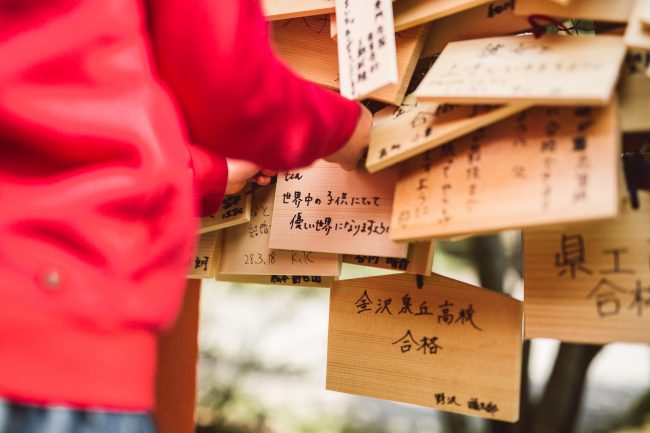
In Japan, it’s tradition to write your prayers or wishes on small wooden plaques and place them outside the Shinto shrines around Japan. These wooden plaques are called ema. You may also see paper fortunes tied to tree branches. These are called omikuji. When we visited the shrines in Japan, we loved seeing all of ema plaques and omikuji fortunes hanging outside.We were so inspired by this tradition that we decided to share our wishes on Instagram using the #ShareMyWish. Learn more about the tradition of the ema and omikuji and scroll through our wishes!

Omikuji can be found by the hundreds outside many of the shrines in Japan. Omikuji has been a Japanese tradition for hundreds of years. The tradition of the omikuji began with people going to shrines and pulling a omikuji for guidance. Nowadays, many shrines have a special system where you pay a small fee and are given a box from which you pull out the paper fortune! Once you unroll your paper, you can read your fortune which can range from really good well wishing to a curse! It is very similar to the Chinese fortune cookies. Omikuji could tell you if you’ll be lucky in love, fortune or health. If you happen to receive a bad fortune, it is custom to leave the omikuji behind by tying it to a nearby tree branch or pole. The idea is if you tie it to the tree, the bad luck will stay with the tree and not you! If you receive a good fortune, you should keep it close to you… in your pocket or purse, at all times! Ema are also found outside of shrines, but they have a bit different meaning. Ema are a Shinto custom, but they also appear outside Buddhist temples. Traditionally, ema are provided at shrines, so worshipers could purchase the plaques and write their wishes to the gods on them. It is very common to have the year’s zodiac sign on them or a picture of the god that the shrine represents, like Inari the fox. Nowadays, you can find a lot of different pictures on the ema; anything from anime to animal drawings. One of our photographers helped us write our own ema near a shrine in Kanazawa. It says “Tea: Wishing the world would be tender for the all the kids in the world!”.
Every year around this time, the wishes stack up. Notes of hope and cheer fly back and forth in the mail as we wish each other joy and peace and happy new beginnings. Inspired by the Japanese ema (wooden plaques where you write your wishes), we asked our Tea employees and customers to share their wishes for the New Year with us. We posted some of their wishes throughout the first week in December.
What are your hopes and dreams for yourself, your family, your little citizens or even the world? Jot down your wishes and post a picture on Instagram using the hashtag #sharemywish. We will continue to re-post your wishes throughout the holidays and into the New Year!







